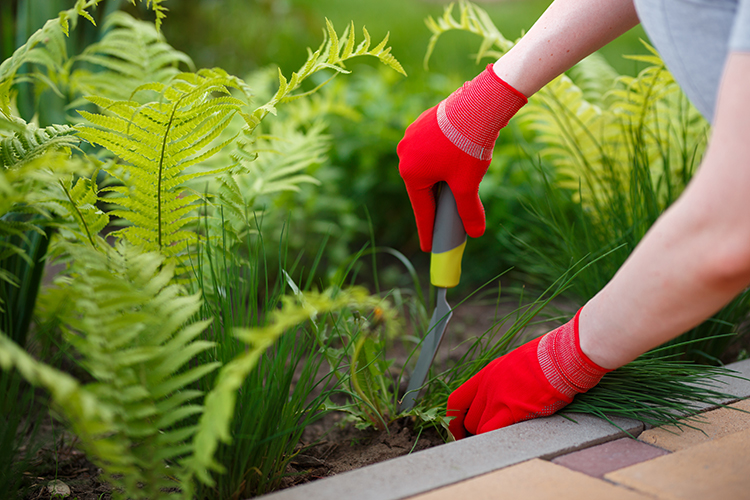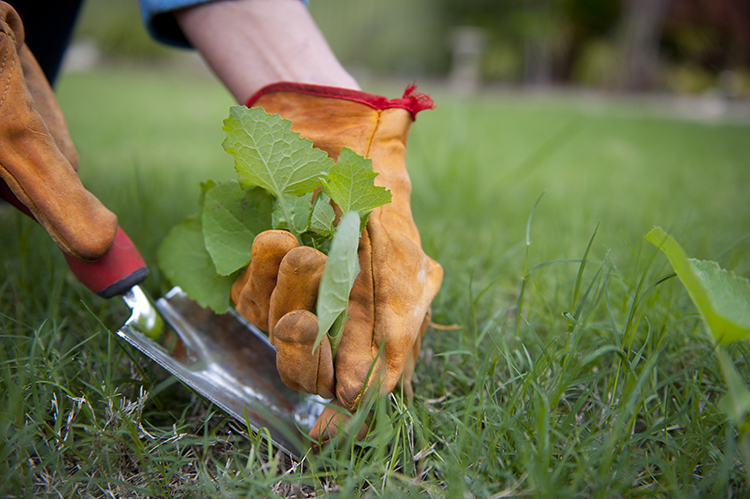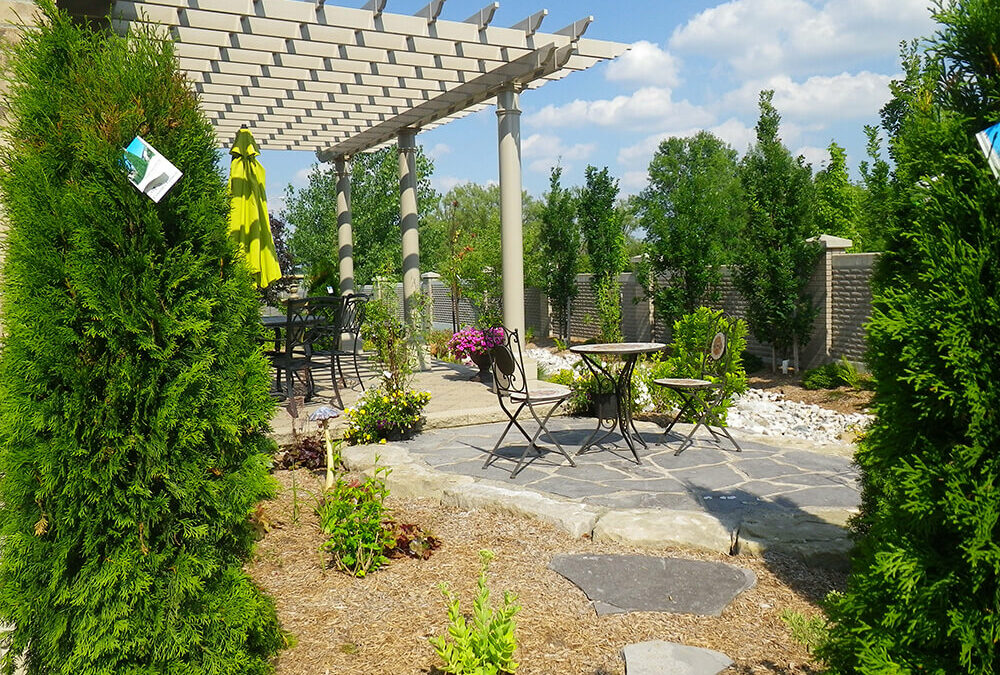
Increase Your Home’s Value with Landscaping
With the current circumstances – stay-at-home orders and a crazy local housing market – many homeowners are opting to invest in their homes. Money that would otherwise be spent on travel, entertainment, consumer goods, etc. is directed instead to home improvement.
Done right, this can potentially increase a home’s value. However, the value of your home isn’t just about what you can get for it when you sell, but also the enjoyment you get out of it while you live there. So, let’s discuss a few ways to enhance both your quality of life and the monetary value of your home.
Curb Appeal
 If you search online for ways to increase a home’s value, one method that almost invariably tops the list is to increase your home’s curb appeal. After all, the front of your home provides the first impression for potential buyers, whether they’re passing by or viewing your home online.
If you search online for ways to increase a home’s value, one method that almost invariably tops the list is to increase your home’s curb appeal. After all, the front of your home provides the first impression for potential buyers, whether they’re passing by or viewing your home online.
Improving curb appeal doesn’t have to be complicated. The most important thing to do is keep things tidy by weeding, edging, and mulching your flowerbeds, pruning your trees and shrubs when appropriate, and aerating, fertilizing, and dethatching your lawn.
Minimal Maintenance
 If you’re looking to upgrade your home’s exterior – front, sides, or back – consider updates that will enhance livability, functionality, and practicality. Not only will this maximize your enjoyment, but when it comes time to sell, potential buyers will be able to see themselves relaxing in, rather than working on, the yard and gardens.
If you’re looking to upgrade your home’s exterior – front, sides, or back – consider updates that will enhance livability, functionality, and practicality. Not only will this maximize your enjoyment, but when it comes time to sell, potential buyers will be able to see themselves relaxing in, rather than working on, the yard and gardens.
One way to add low-maintenance beauty to your landscape, is to include native varieties among the trees, shrubs and plants you choose. Native Ontario plant species are well-acclimated to our conditions, so require very little extra care over that which Mother Nature provides. Native species also attract native birds and smaller pollinators, which is an added bonus.
Hardscaping
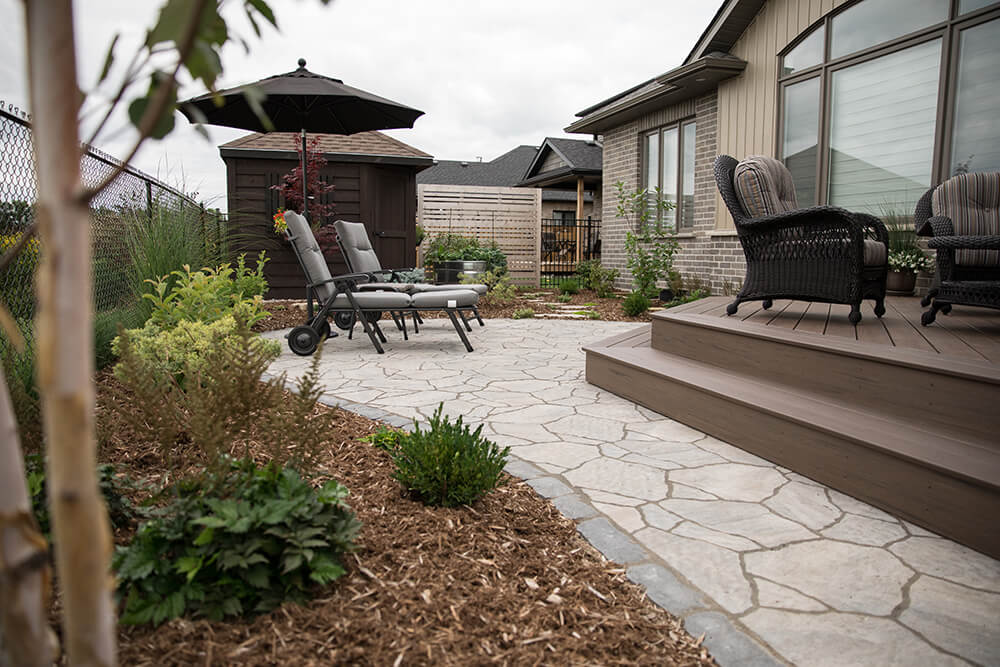 Walkways, patios, and retaining walls are gratifying additions to a home’s exterior. In keeping with the theme of minimal maintenance, though – a focus of almost every one of our customers – we recommend being mindful of the materials you use.
Walkways, patios, and retaining walls are gratifying additions to a home’s exterior. In keeping with the theme of minimal maintenance, though – a focus of almost every one of our customers – we recommend being mindful of the materials you use.
Wood decking has historically been inexpensive but does have a limited life span and also can require quite a bit of maintenance to keep it looking good and hazard-free. Poured smooth, brushed, or stamped concrete can make a great patio or walkway, but durability can be an issue and maintenance is required in the form of cleaning and sealing.
For optimal durability and ease of maintenance, precast or natural stone pavers are ideal. The range of colours, textures, and styles is virtually limitless and a stone patio or walkway can be straight/square or round/curvy, so you can be sure to find the right look to complement your home’s exterior.
And if you like the look of stone, smaller-sized decorative stone like river rock, lava rock, quartz, peastone, granite, and dolomite can be used in lieu of mulch in flowerbeds, in between large pavers in walkways and patios, and in and around water features.
Visual Impact
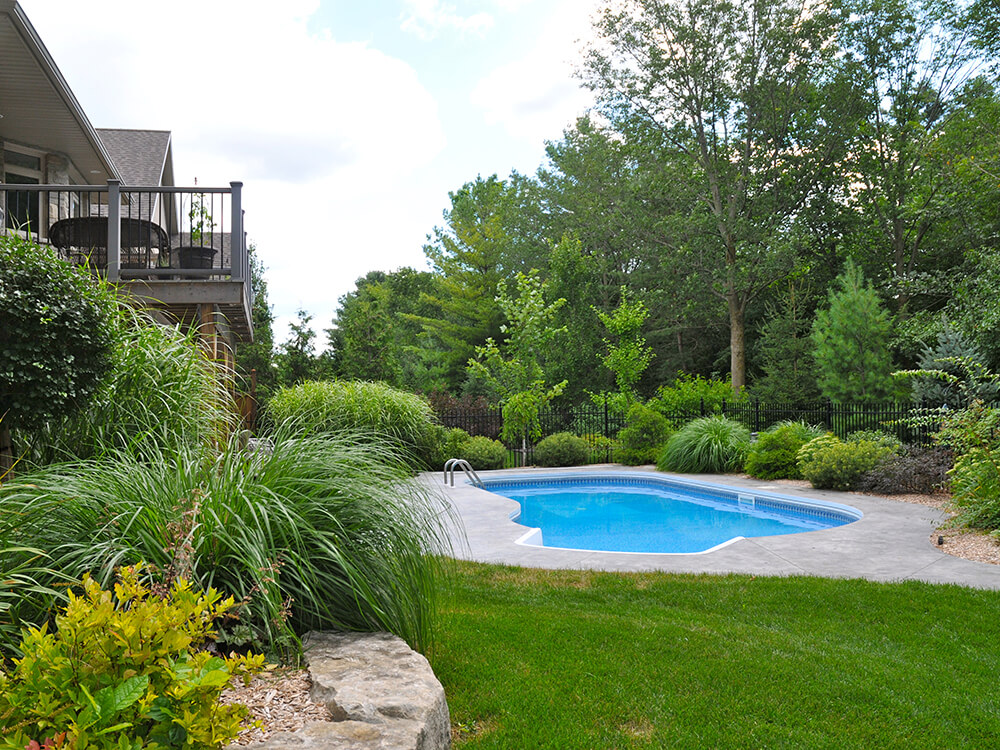 Plants, trees, and shrubs can be used to camouflage imperfections, add privacy, and enhance the existing beauty around your home’s exterior and yard. For example, an exposed foundation can make a home appear old and unkempt. But, planting a balanced selection of plants and shrubs appropriate for the location’s sun exposure can add depth and colour, providing a welcome distraction from your foundation’s drab, grey expanse.
Plants, trees, and shrubs can be used to camouflage imperfections, add privacy, and enhance the existing beauty around your home’s exterior and yard. For example, an exposed foundation can make a home appear old and unkempt. But, planting a balanced selection of plants and shrubs appropriate for the location’s sun exposure can add depth and colour, providing a welcome distraction from your foundation’s drab, grey expanse.
Exposure to winds or neighbouring properties can make backyard living less enjoyable than it should be. Planting a row of trees, shrubs, or ornamental grass can add shelter and/or privacy. Consider mixing shrubs or grasses with fence panels for increased visual interest.
Serenity
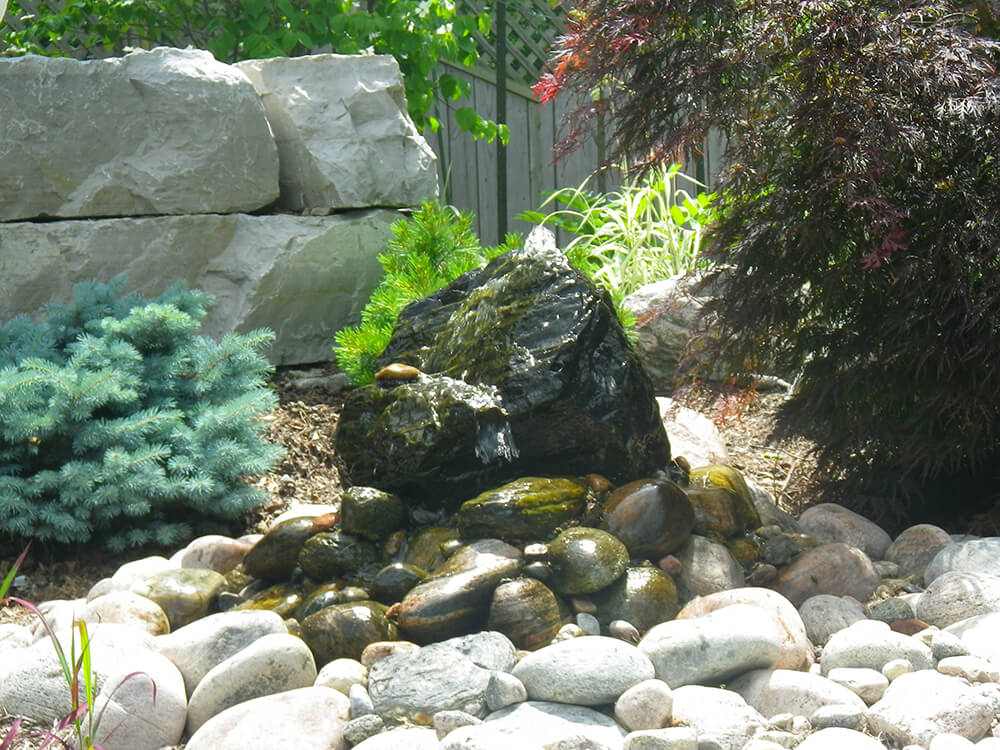 Add unique atmosphere to your outdoor living areas, walkways, and/or front entrance with lighting and water. Ponds, streams, waterfalls, fountains, and bubbling rocks add an audio-visual element that has a universally relaxing effect. And including lighting along walkways, trees, water features, pools, and patios enhances outdoor safety and enjoyment after the sun goes down.
Add unique atmosphere to your outdoor living areas, walkways, and/or front entrance with lighting and water. Ponds, streams, waterfalls, fountains, and bubbling rocks add an audio-visual element that has a universally relaxing effect. And including lighting along walkways, trees, water features, pools, and patios enhances outdoor safety and enjoyment after the sun goes down.
There are a multitude of ways to improve your landscaping for added quality of life and value. Starting with a plan can help you get focused and establish a budget. If you’re planning some upgrades this year, but don’t want to go it alone, we’re here to help. Drop us a note to let us know what your goals are and we’ll help you get there.

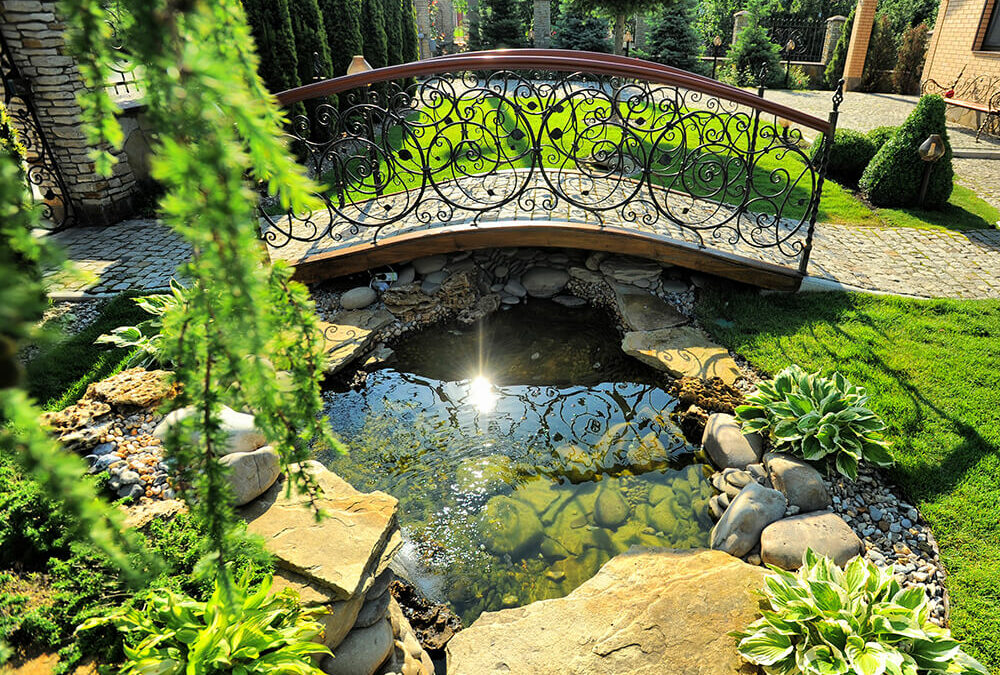
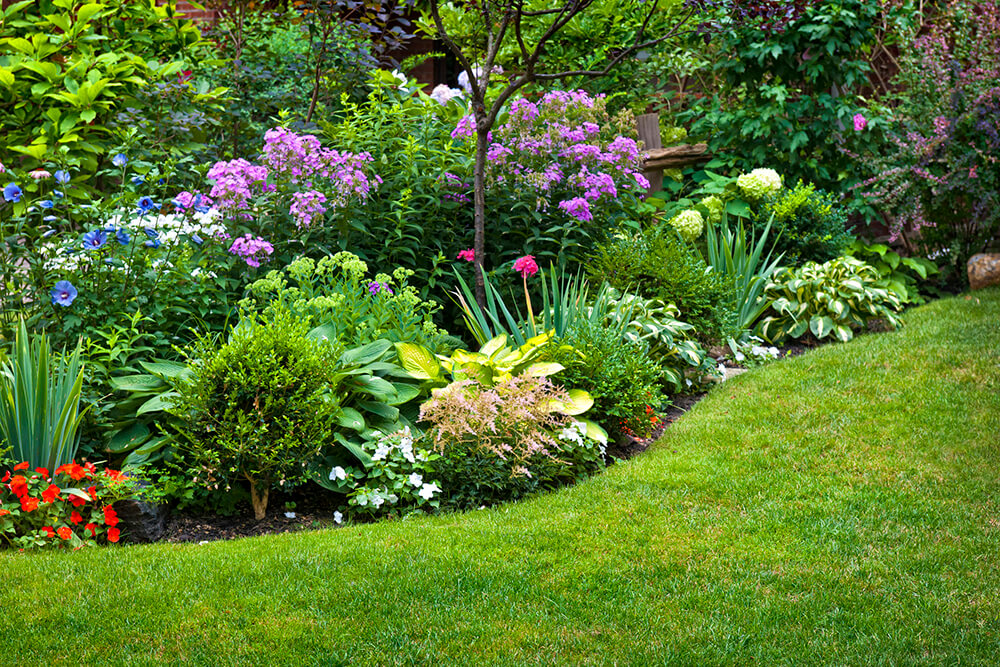
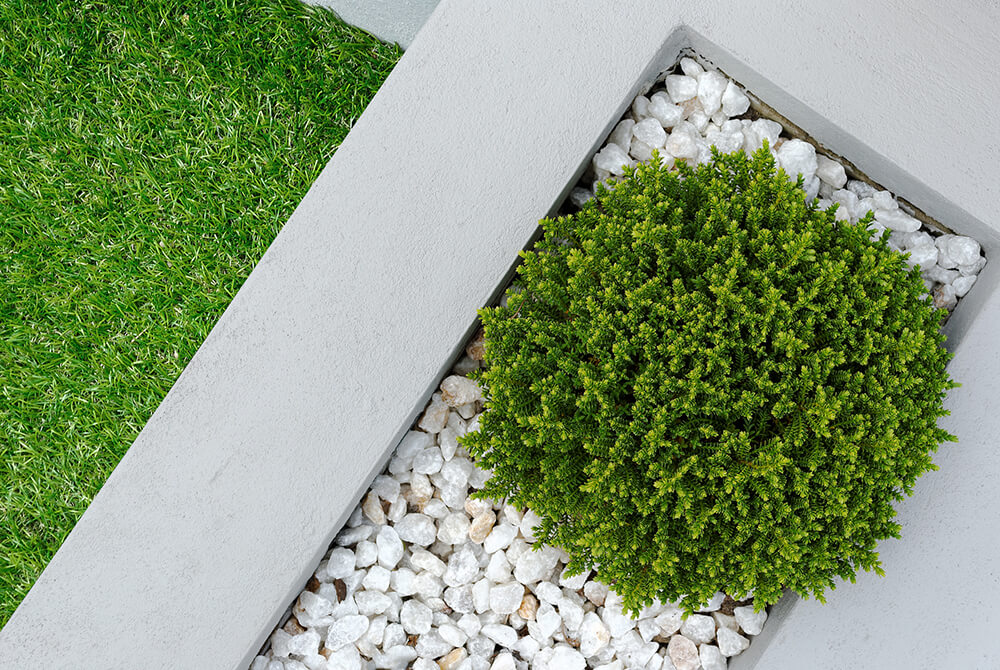
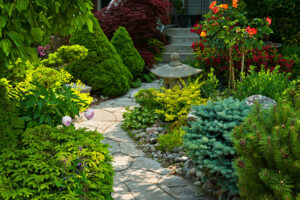

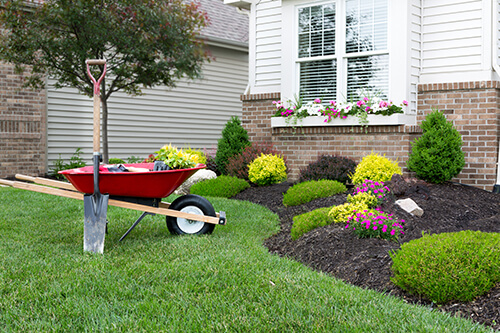 If your home has a grass-dominant greenspace in front, keeping your lawn neat and tidy is a no brainer for improving and maintaining curb appeal. Keep grass cut to a consistent length, but not too short as doing so can cause undue stress and increased exposure to weeds and pests. Edging your lawn along walkways, gardens, and your driveway provide a nice, polished appearance as well.
If your home has a grass-dominant greenspace in front, keeping your lawn neat and tidy is a no brainer for improving and maintaining curb appeal. Keep grass cut to a consistent length, but not too short as doing so can cause undue stress and increased exposure to weeds and pests. Edging your lawn along walkways, gardens, and your driveway provide a nice, polished appearance as well.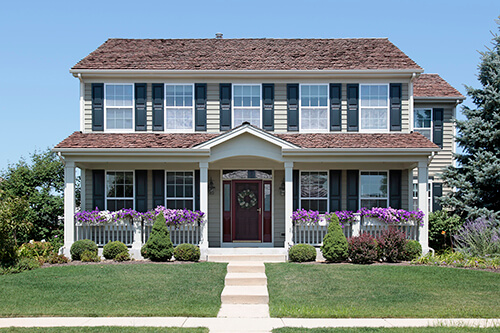 Fill in flat, exposed areas of your home’s exterior with shrubs, ornamental grasses, and small trees. This will add depth, balance, and visual interest to areas that were previously a blank canvas. Remember not to obstruct windows.
Fill in flat, exposed areas of your home’s exterior with shrubs, ornamental grasses, and small trees. This will add depth, balance, and visual interest to areas that were previously a blank canvas. Remember not to obstruct windows. Consider replacing your asphalt driveway with a professionally-installed stamped concrete or natural paver driveway. This area of your front yard is highly visible from the street and sidewalk, so making it visually interesting not only adds curb appeal but also distinguishes your home from others in your neighbourhood.
Consider replacing your asphalt driveway with a professionally-installed stamped concrete or natural paver driveway. This area of your front yard is highly visible from the street and sidewalk, so making it visually interesting not only adds curb appeal but also distinguishes your home from others in your neighbourhood.
 It’s all well and good to provide seed and suet for birds, but the solution to population decline requires us to look a little closer. Instead of thinking short-term, say season by season, let’s look at it from a yearly perspective, or even longer.
It’s all well and good to provide seed and suet for birds, but the solution to population decline requires us to look a little closer. Instead of thinking short-term, say season by season, let’s look at it from a yearly perspective, or even longer.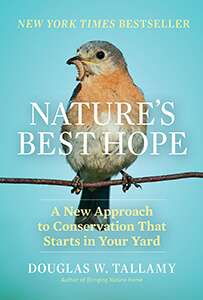 Wildlife Ecologist Doug Tallamy, author of “
Wildlife Ecologist Doug Tallamy, author of “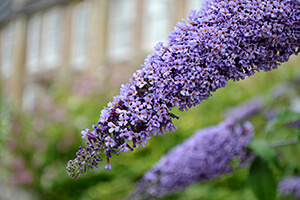 The good news is this isn’t an all-or-nothing proposition. You don’t have to swap out all of the plant life in your garden and risk disrupting your current modern or tropical motif, for example.
The good news is this isn’t an all-or-nothing proposition. You don’t have to swap out all of the plant life in your garden and risk disrupting your current modern or tropical motif, for example. 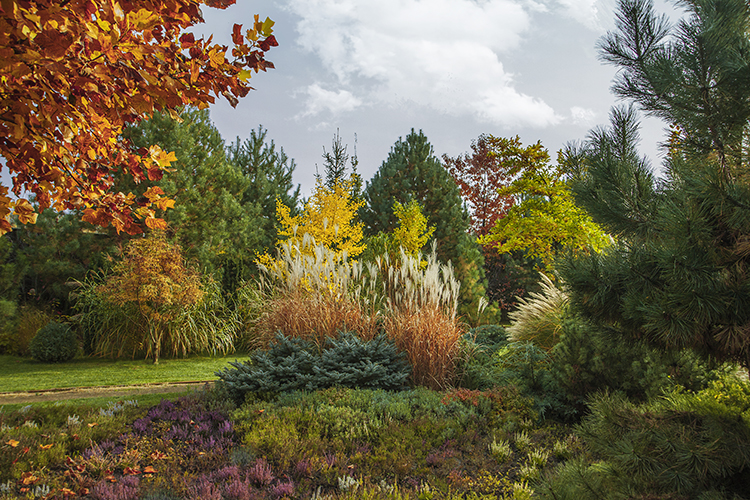
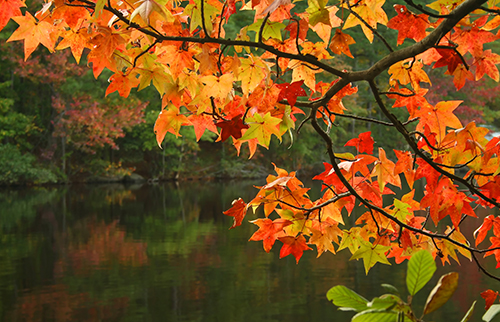 While the trees, plants, and shrubs throughout Southwestern Ontario offer up a lot of colour, many homeowners want colour in their own yards, as well. There are some quick fixes for this – displaying pumpkins, potted mums, and faux leaves and floral décor, for example. However, adding perennial colour to your fall garden takes a bit more forethought.
While the trees, plants, and shrubs throughout Southwestern Ontario offer up a lot of colour, many homeowners want colour in their own yards, as well. There are some quick fixes for this – displaying pumpkins, potted mums, and faux leaves and floral décor, for example. However, adding perennial colour to your fall garden takes a bit more forethought.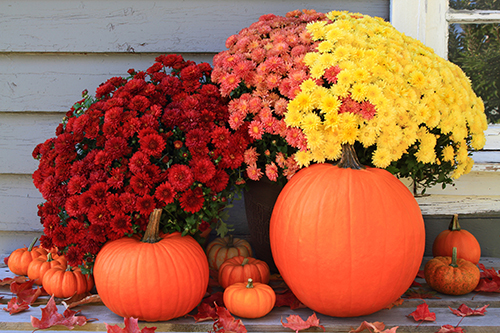 Plant retailers and nurseries might be among your best resources for determining what’s at its colourful peak right now. They tend to sell what’s in season, when it’s in season. And the warm, sunny days, cool nights, and more regular precipitation of early fall can be the perfect time to plant, offering ideal conditions for new plants, trees, and shrubs to take root before the first frost.
Plant retailers and nurseries might be among your best resources for determining what’s at its colourful peak right now. They tend to sell what’s in season, when it’s in season. And the warm, sunny days, cool nights, and more regular precipitation of early fall can be the perfect time to plant, offering ideal conditions for new plants, trees, and shrubs to take root before the first frost. Once plants are in the ground, most of the initial growth is going to take place below the soil, which is good. So, don’t be disappointed if you see much going on above ground. Your patience will be rewarded with healthy, showy plants next year. To help things along and protect vulnerable young root systems, add a thick layer (4 inches) of mulch around plants. Mulch will add much needed insulation to keep heat in and cold out.
Once plants are in the ground, most of the initial growth is going to take place below the soil, which is good. So, don’t be disappointed if you see much going on above ground. Your patience will be rewarded with healthy, showy plants next year. To help things along and protect vulnerable young root systems, add a thick layer (4 inches) of mulch around plants. Mulch will add much needed insulation to keep heat in and cold out.